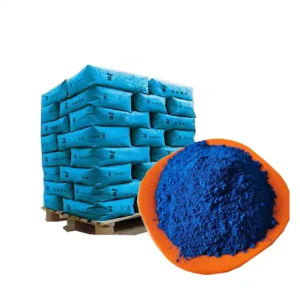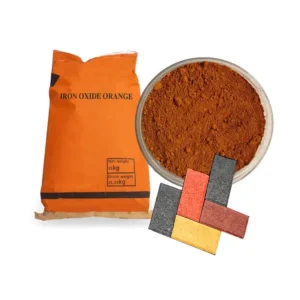Iron Oxide Pigment is widely used across multiple industries due to its beneficial properties. However, like any substance, there are safety aspects to be aware of when handling it.
Physical Contact Precautions
Direct skin contact with Iron Oxide Pigment, especially in its powder form, should be minimized. Although it is non – toxic, long – term or repeated contact can cause skin irritation. Workers in pigment – manufacturing plants or those applying iron oxide – based paints are at risk. Wearing gloves can effectively prevent this, ensuring skin remains protected during handling.

Inhalation Concerns
Inhalation of Iron Oxide Pigment dust is a significant safety concern. Fine pigment particles, when airborne, can be inhaled into the respiratory system. In industrial settings with poor ventilation, workers may be exposed to high levels of dust. This can lead to respiratory issues over time. Using proper respiratory protection, such as masks with high – efficiency particulate air (HEPA) filters, is crucial.
Compatibility with Other Substances
When using Iron Oxide Pigment, its compatibility with other substances in the application needs to be considered. For example, in chemical reactions during paint or coating production, some substances might react with the pigment. This could potentially release harmful by – products. Thorough research and testing should be done before combining iron oxide pigment with other chemicals.
Storage and Transportation
During storage, Iron Oxide Pigment should be kept in a dry and well – ventilated area. Moisture can cause the pigment to clump, affecting its quality and potentially leading to mold growth. In transportation, it should be properly packaged to prevent spills. Spilled pigment can create a slipping hazard and may be difficult to clean up.
Safety in Specific Industries
In the cosmetics industry, where Iron Oxide Pigment is used in products like lipsticks and eyeshadows, strict quality control is essential. The pigment must meet safety standards to ensure it doesn’t cause any harm to the skin or eyes. In construction, proper application techniques are needed to avoid creating a dusty environment that could pose a risk to workers.

Regulatory Compliance
Manufacturers and users of Iron Oxide Pigment need to comply with relevant safety regulations. Different regions have specific rules regarding the handling, storage, and use of pigments. For example, some areas may have limits on the amount of pigment dust allowed in the workplace. Adhering to these regulations is crucial for safety.
Emergency Response Planning
In case of accidental exposure, having an emergency response plan is vital. If someone inhales a large amount of pigment dust or gets it in their eyes, immediate first – aid procedures should be in place. Workers should be trained on what to do in such situations, and emergency contact information should be readily available.
In conclusion, while Iron Oxide Pigment is generally considered safe, there are several safety considerations. By being aware of these and taking appropriate precautions, users can ensure its safe use in various applications.

